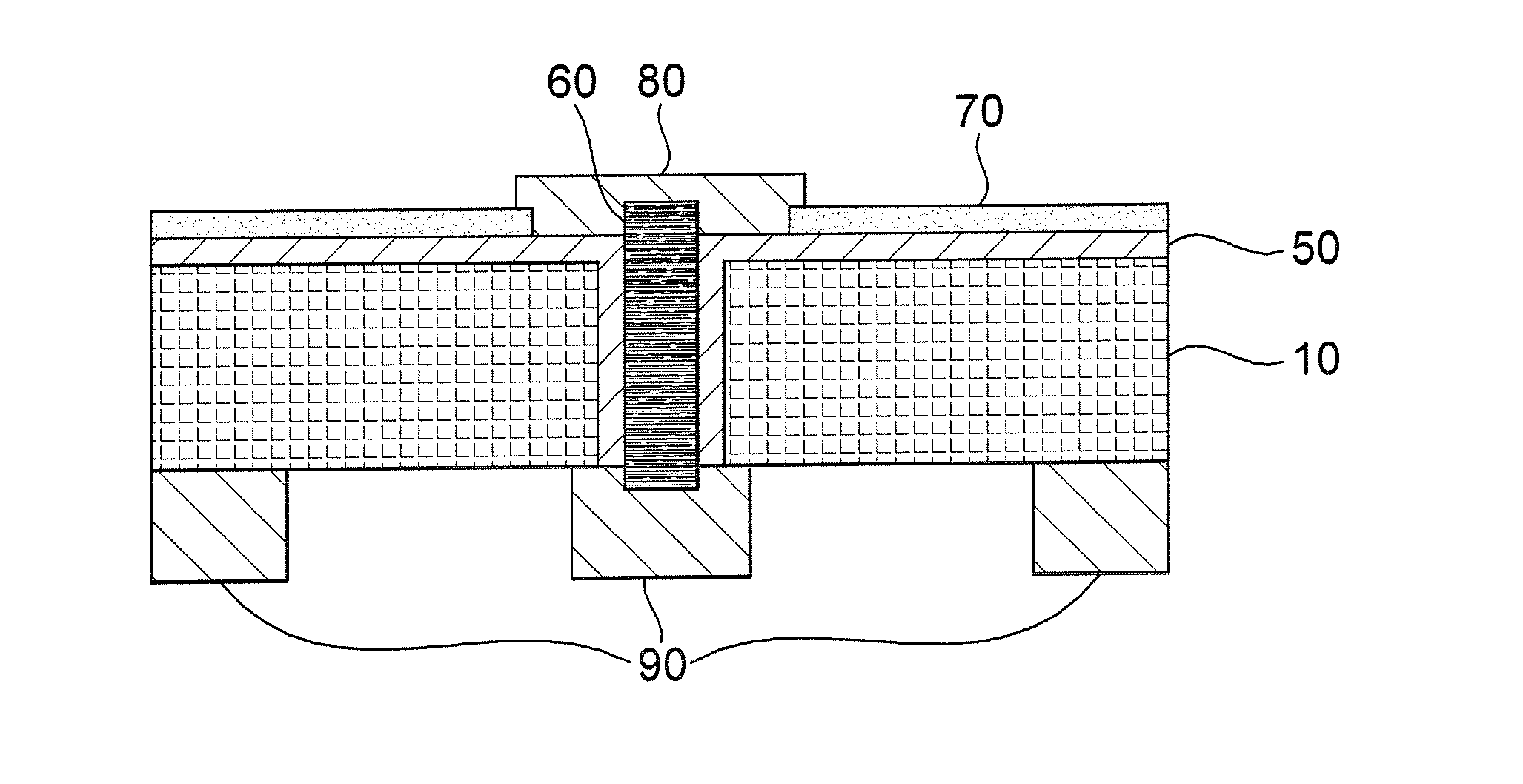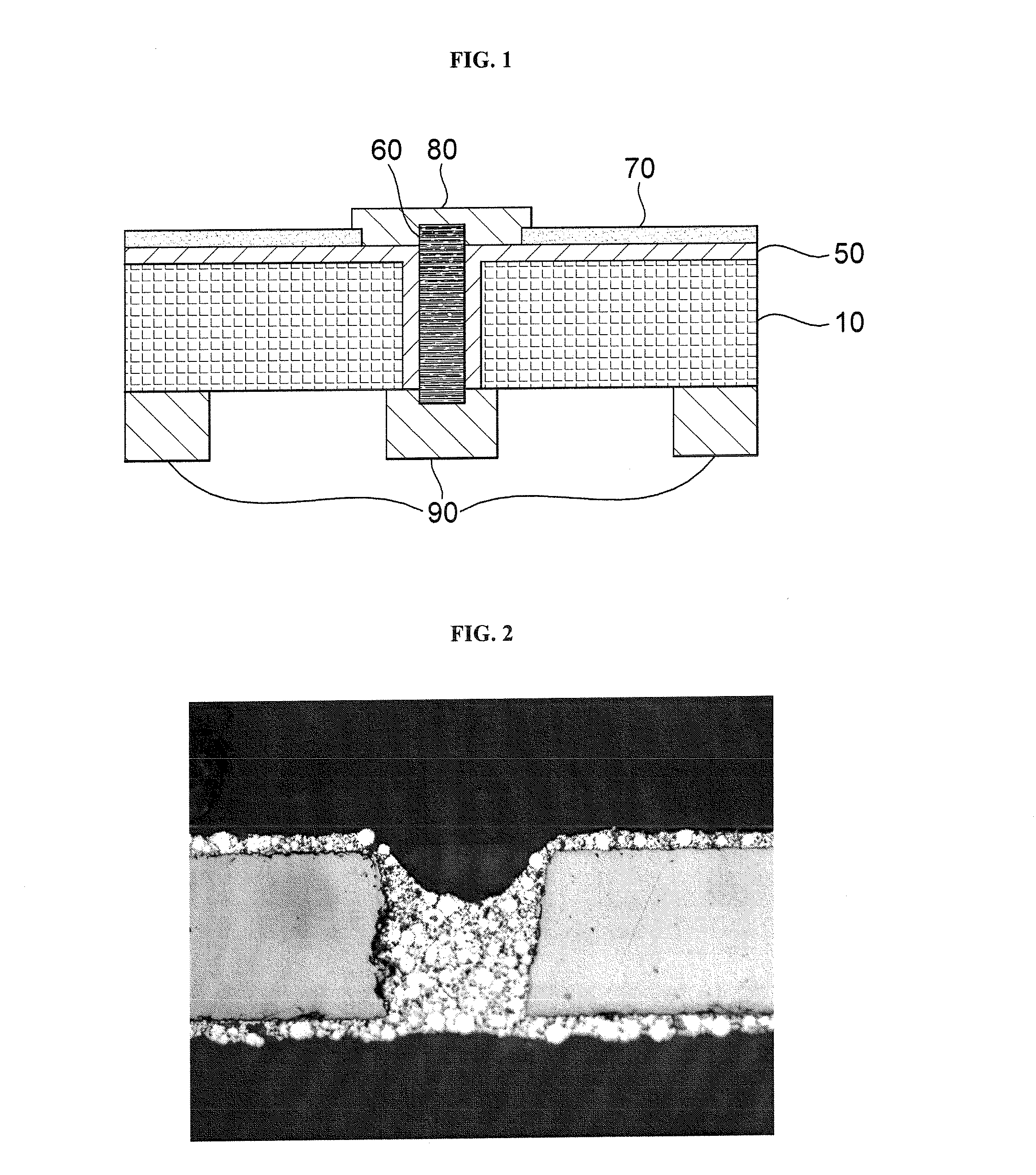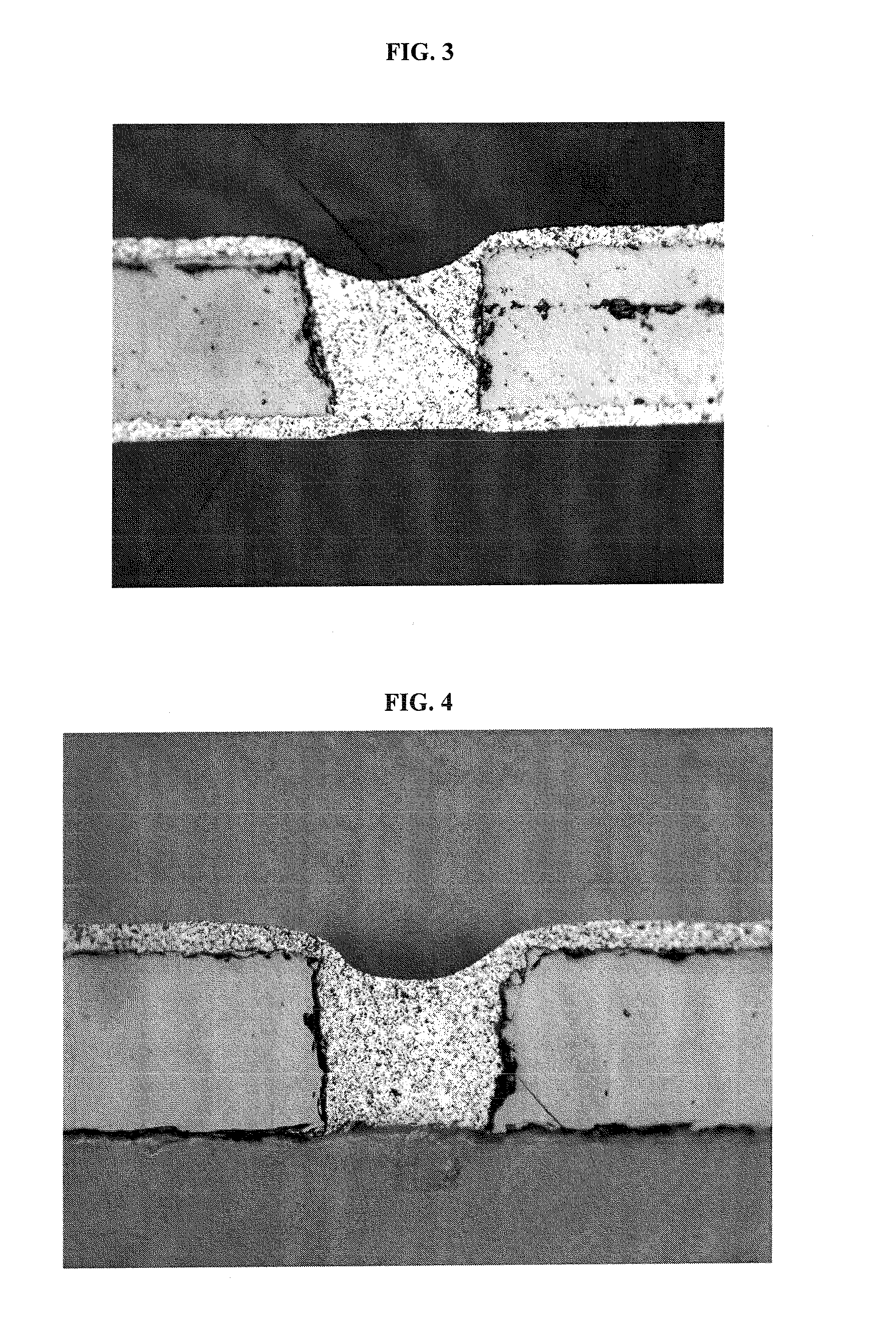Via Fill Material For Solar Applications
a solar cell and filling material technology, applied in the direction of printed element electric connection formation, semiconductor/solid-state device details, conductors, etc., can solve the problems of low shunt resistance and particularly difficult solar cell parasitic resistance management, and achieve excellent shunt performance
- Summary
- Abstract
- Description
- Claims
- Application Information
AI Technical Summary
Benefits of technology
Problems solved by technology
Method used
Image
Examples
examples
[0038]Polycrystalline silicon wafers, 12.5 cm×12.5 cm, thickness 250-300 μm, were coated with a silicon nitride antireflective coating on the N-side of the wafer. The sheet resistivity of these wafers was about 1 Ω-cm. A contact grid was formed on the antireflective coating using Ferro NS33-502 and NS33-503 pastes, commercially available from Ferro Corporation, Vista, Calif., by screen printing.
[0039]Vias on the order of 200 microns in diameter were formed through the wafers using laser drilling before diffusion process.
[0040]Two glass frits were separately produced using conventional glass making techniques so as to achieve a composition shown in parts by weight in Table 2:
TABLE 2Glass Compositions in weight %12PbO28.956.1ZnO—19.6SiO2—14.4Al2O3—6.6P2O512.3—V2O558.8—Ta2O5—3.3
[0041]Each of the glass frits was separately milled to a fineness of 2 to 5 microns D50. Three via fill material compositions according to the invention were prepared by blending the components listed in parts b...
PUM
| Property | Measurement | Unit |
|---|---|---|
| wt % | aaaaa | aaaaa |
| D50 sizes | aaaaa | aaaaa |
| D50 particle size | aaaaa | aaaaa |
Abstract
Description
Claims
Application Information
 Login to View More
Login to View More - R&D
- Intellectual Property
- Life Sciences
- Materials
- Tech Scout
- Unparalleled Data Quality
- Higher Quality Content
- 60% Fewer Hallucinations
Browse by: Latest US Patents, China's latest patents, Technical Efficacy Thesaurus, Application Domain, Technology Topic, Popular Technical Reports.
© 2025 PatSnap. All rights reserved.Legal|Privacy policy|Modern Slavery Act Transparency Statement|Sitemap|About US| Contact US: help@patsnap.com



